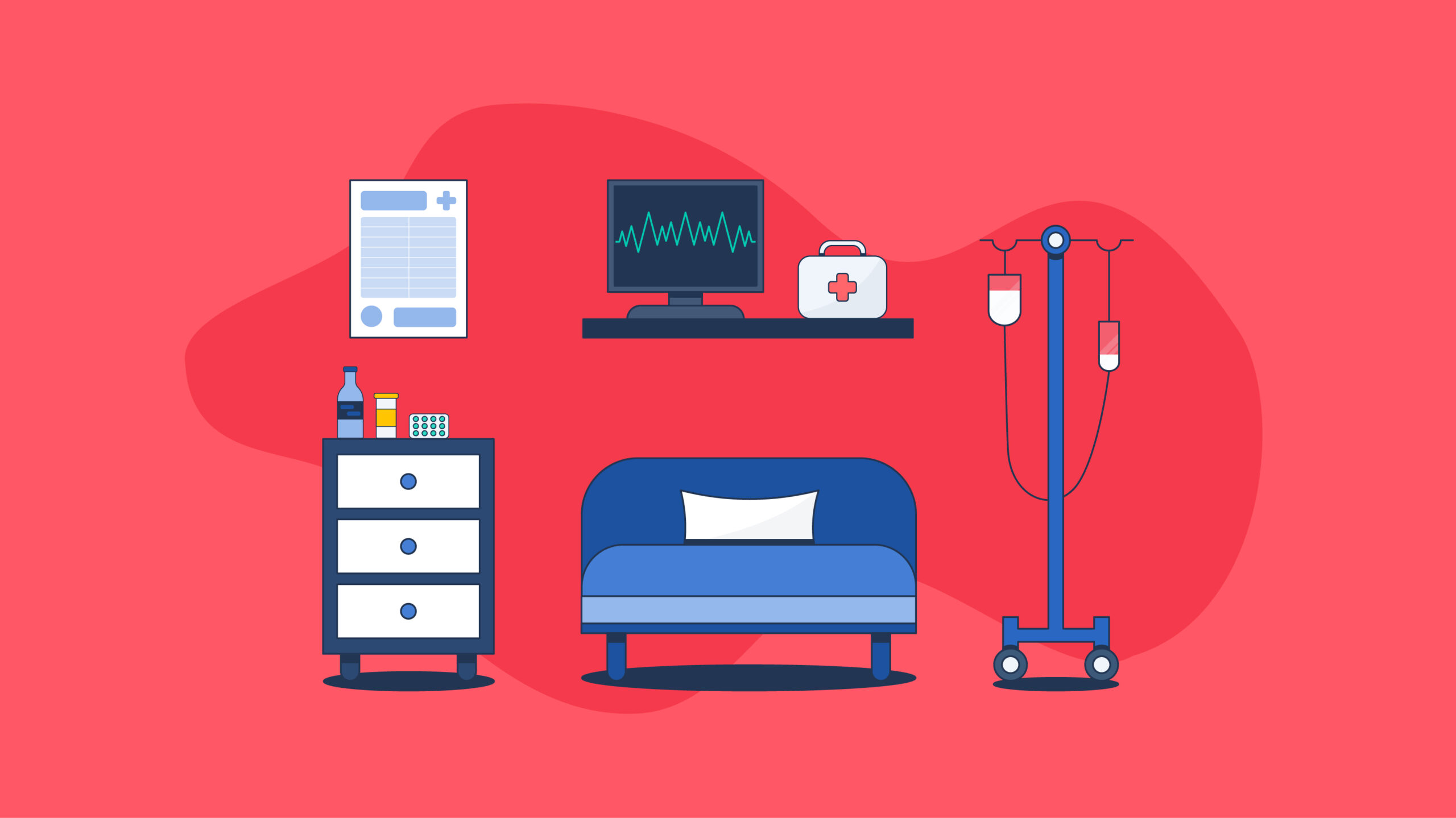
In an emergency situation, the last thing you need is an expensive bill for the care you received. But why are emergency room costs so high, and how can you lower an ER bill? Check out this complete guide to dealing with emergency room bills.
How Much Does an Emergency Room Visit Cost Out-of-Pocket?
Emergency room visits can be expensive, so if you end up in the ER but don’t have health insurance or your coverage is disrupted for some reason, you’ll likely owe a large out-of-pocket sum.
The full cost of an ER visit depends on the services you receive there. While figures vary, United Healthcare estimates that the average amount an individual will spend on an ER bill is $2,200. Meanwhile, the Consumer Health Ratings figured that average emergency room costs for uninsured individuals added up to $1,220 in 2019. If you need diagnostic testing, life-saving care, or emergency transportation, that number climbs even higher.
Emergency Room Costs With Insurance
Even when you do have health insurance, ER visits may cost you a pretty penny. Your emergency medical care coverage depends on your plan, insurance company, and state, but in any case, you can expect to pay a high copay, shell out for a large percentage of coinsurance, or meet a deductible before your coverage takes over.
With the most thorough and comprehensive health insurance plans, copays for ER visits start at around $150. While that amount covers the initial costs of getting seen in an emergency medical facility, your payments might not stop there. There’s a chance you’ll have to pay extra for tests and diagnostic services, medications, and emergency transportation.
If you’re required to meet a deductible before your insurance covers an ER visit, and if your ER bill is more than your deductible, you’ll have to pay the full deductible all at once, which may be thousands of dollars. Then, your insurance will cover the rest of the medical claim.
Unfortunately, emergency room bills are often even more complicated than that. If you are seen by an out-of-network doctor during your visit (and yes, that’s possible even in an in-network medical facility—more on that later), you may receive a surprise bill. Or, if your ER claim is denied, you may suddenly be responsible for a bill in its entirety, even if you have health insurance.
Is your emergency room bill going to break the bank? aJust is a pro at negotiating ER bills.
Get help from experts
We know how complicated this process is. Share your case with us and we will be able to help you.
Why Are Emergency Room Services So Expensive?
Emergency room costs are notorious for being sky high. Here are a few reasons why you may be charged more than you were expecting after an ER visit:
- Emergency Transportation. If you’ve been in an accident, are dealing with a life-threatening condition, or are simply unable to get to the ER any other way, you may be brought to the medical facility in an ambulance. In emergent situations, you don’t have a choice but to accept a ride, which, depending on your insurance, may cost you heavily. Add that to the rest of your ER bill and you’re looking at some serious medical debt.
- Out-of-Network Services. It’s estimated that one in five ER visits results in a surprise bill due to an out-of-network provider or service. Even if a hospital’s trauma center or an emergency room is within your insurance network, it’s possible that one of the doctors who attends to you (or reads your X-ray, for example) is not contracted with your insurance. This means that your insurance will only cover their services at a lower rate or not at all, leaving the rest of the bill up to you.
- Not Medically Necessary. Some insurance plans may deem an ER visit “not medically necessary.” For example, if you’re concerned about the sudden onset of chest pain, you may head to the emergency room. There, the ER doctors run a series of tests and determine that the chest pains are due to heartburn, not an emergency condition. Because the doctors need to note the diagnosis when filing a claim to your insurance, your insurance will see the reason behind the visit. If they then determine that the ER visit was not “medically necessary,” they may deny the claim. As the patient who was trying to avoid a life-threatening situation, this feels unfair!
- ER Insurance Issue. Emergency rooms can choose to offer services exclusively to patients with public insurance plans, so that those with private insurance must pay out-of-pocket for care. On rare occasions, it is also possible to encounter an ER that is not in your insurance network. The problem with emergency care, however, is that you don’t have the luxury of looking for and traveling to an ER that your insurance will cover—you need to find the closest one immediately. This is especially true if you are brought to the ER unconscious. There are also different levels of ERs which are equipped to handle different kinds of emergencies. If you need a level one trauma center but the nearest one is not in your insurance network, you’re out of luck. This can happen even if you subscribe to an insurance plan with comprehensive ER coverage.
- Cost of Assembling the Team. You’ve probably read stories online about people who visited the ER and were released with a Band-Aid or a few stitches, only to get sent a several-thousand-dollar bill. Because ER prices are not regulated in the US, each hospital director is allowed to choose their own facility fee. This fee is required of each patient, and goes towards the costs of keeping an ER open 24/7 and staffed with highly trained doctors, with quick access to expensive medical equipment and all types of medications. Because of this, you may get simple treatment at the ER and end up with an unexpectedly enormous medical bill. Again, this doesn’t feel fair!
- Markups. If you’ve ever been to the ER only to be given ibuprofen and told to rest, you’ve probably seen that the over-the-counter medicine costs significantly more there than it would at your local drugstore. You may even pay hundreds of dollars for an over-the-counter remedy! Just like with the facility fee, you’re not just paying for the medication, but also for the fact that the emergency room has so many medications in stock. The problem is, you aren’t warned of these markups, and therefore don’t know to ask if you can take the medication at home instead.
- Components. An ER visit isn’t covered by a flat fee. There are several components that make up the bill sent to your insurance, such as triage fees, facility fees, professional fees, equipment fees, and supply costs. The emergency room costs you accumulate also may vary based on the severity of your case.
How to Lower an ER Bill
Due to the lack of transparency about hidden costs like out-of-network physicians in in-network facilities, and because you’re likely to be brought to the ER in no condition to advocate for yourself, avoiding high ER bills is difficult. Luckily, lowering them is somewhat easier. Here are a few strategies at your disposal:
- Fight an ER Claim Denial. If your emergency room bill is the result of a denied health insurance claim, your best course of action is to fight the denial. That means filing an appeal with your health insurance company and providing supporting documents in the hopes that they will reverse their decision. Just keep in mind that this is a large undertaking that can zap your time and energy.
- Negotiate an ER Bill. While there’s no guarantee this strategy will work, you can always try calling the ER’s billing department and asking for a reduced rate. Some facilities will offer a discount if you pay quickly in one lump sum, or will offer you an insured or Medicare rate even if you don’t qualify for it. The challenge here is knowing how to negotiate an ER bill!
- Get an Attorney. If you believe that your large emergency room bill was the result of a breach of legality on someone’s part, you can get an attorney to take on your case. The drawback to this option is that it can be expensive and time-consuming, with no guarantee of success.
- Hire a Medical Billing Advocate. The most secure and convenient option is to hire a medical billing advocate like aJust. This advocate will audit your emergency room charges, make phone calls on your behalf, and use their knowledge of the system to get you the greatest discount possible.
Why Call on aJust For Help With Emergency Room Bills
Large emergency room bills have a way of making bad situations even worse. Because the ER billing system is not straightforward and varies so much based on the will of the hospital directors, it’s impossible to know as a patient which bills can be adjusted and how. If there is any situation in which you need an expert on your side, it’s with emergency room billing.




